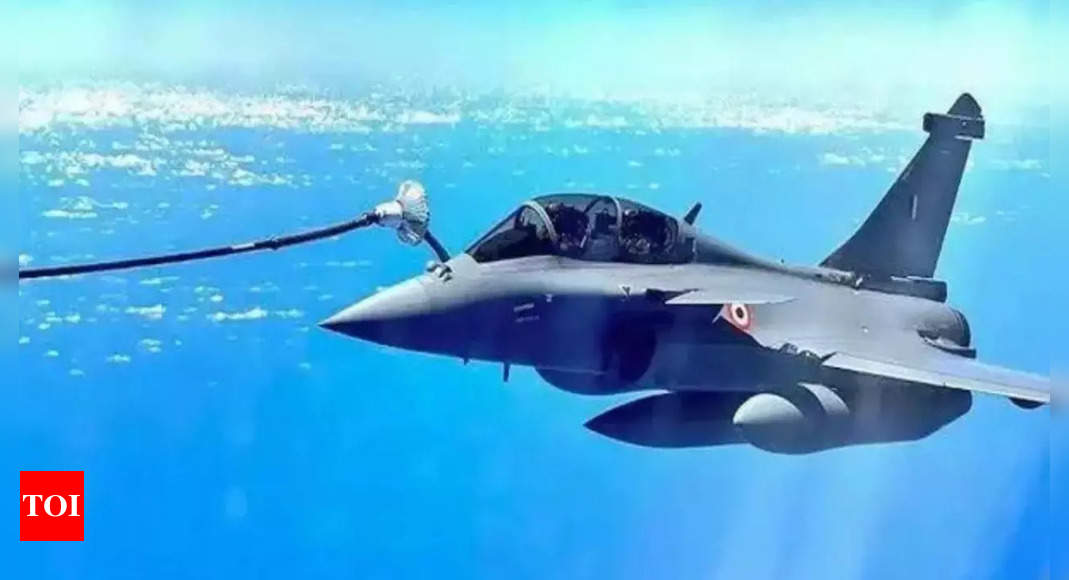[ad_1]
The Rajnath Singh-led Defence Acquisitions Council (DAC) accorded the ‘acceptance of necessity (AoN)’ to the twin procurements for the Navy, which together will cost upwards of Rs 80,000 crore (9 billion), sources told TOI.
The actual inking of the contracts will take place after extensive techno-commercial negotiations, which will take several months, and the final approval by the Cabinet Committee on Security. “The final prices will be subject to those negotiations,” a source said.

Both the deals are critical for the Navy, which is grappling with a depleting conventional submarine fleet as well as an inadequate number of fighters to operate from its two aircraft carriers.
The proposed inter-governmental agreement for the Rafale-M fighters will include off-the-shelf purchase of 22 single-seat jets and four twin-seat trainers, along with associated equipment, weapons, simulator, spares, crew training and logistic support. “This deal will cost an estimated Rs 50,000 crore, with deliveries of the jets to begin around three years after the contract is inked,” a source said.
The MoD, on its part, said the price and other terms of the purchase will be negotiated with the French government after taking into account all relevant aspects, including the “comparative procurement price of similar aircraft by other countries”.
The three Scorpene submarines to be constructed at the Mumbai-based Mazagon Docks (MDL), which will have air-independent propulsion (AIP) developed by DRDO for greater underwater endurance, in turn, will cost around Rs 30,000 crore. “The first new submarine should roll out five to six years after the contract,” the source said.
The three new submarines will follow the first six Scorpenes constructed at MDL in collaboration with French M/s Naval Group for over Rs 23,000 crore under ‘Project-75’, which was hit by huge time and cost overruns after being inked in 2005. With the sixth Scorpene now slated for delivery by early-2024, all these vessels will also be retrofitted with the indigenous AIP in the years ahead.
As for the Rafale-M, it emerged as the frontrunner over the American F/A-18 Super Hornet after extensive trials conducted by the Navy last year, as was reported by TOI in December.
The French fighter also had a head start on logistical grounds given that IAF has already inducted 36 Rafales under the Rs 59,000 crore deal inked in September 2016.
The Navy, on its part, is left with 40 of the 45 MiG-29K jets, inducted from Russia at a cost of $2 billion from 2009 onwards, for its two aircraft carriers, the older Russian-origin INS Vikramaditya and the new indigenous INS Vikrant. The MiG-29Ks have also been dogged by poor serviceability and other problems over the years.
With the indigenous twin-engine deck-based fighter (TEDBF) likely to take at least a decade to become operational, the Navy had pushed for the 26 Rafale-M jets as an interim measure.
[ad_2]
Source link










More Stories
We can’t wait to face India in the final: Pat Cummins | Cricket News
Railways plans 3,000 additional trains in next 4-5 years to minimise number of waitlisted tickets | India News
Faridabad: Man dies after ‘falling from hotel room window’ while partying with friends